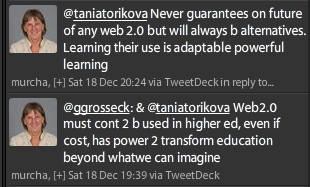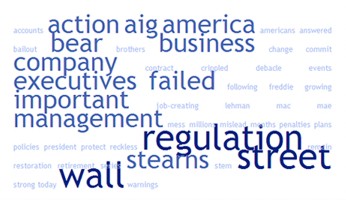The words from Big yellow taxi come to mind
Don’t it always seem to go
That you don’t know what you’ve got
Till it’s gone
That’s how it’s suddenly hit me with the news about Yahoo terminating the popular social bookmarking site, Delicious. I haven’t felt this disappointed since Ning stopped free service. Delicious was one of the first Web 2.0 tools I used and raved about to other people. Not only an extremely efficient way to save links and render them searchable via tagging, but also a very transparent way to follow what other people are reading and saving.
I’m slow off the mark with this post; so many people have already tweeted and blogged their despair but it’s taking a while to settle in. At first I thought, oh well, I still have Diigo. And actually, I’ve been sending my links to Delicious via Diigo for some time since it’s so easy to use Diigo’s bookmarklet for recording essential information, and since, like others, I’ve used the automatic Diigo to Delicious function.
But then today I decided to have a look at my Delicious and realised how easy it is to see what people in your network are reading and saving. The beauty of Delicious is in the Network. Not only can I see what someone in my network is reading and saving, I can see an alphabetical listing of their tags, their tag bundles and their lists. This means I have an insight into the way their thinking, what’s important to them, the direction they’re taking.
And now I’m lamenting not using Delicious as well as I should have. Why didn’t I use tag bundles or make lists? Typical that I’d want to start now that Delicious is on its last legs.
Seriously, many people have written about the demise of Delicious with informative alternatives. I like Anne Mirtschin’s post. Anne’s not a whinger like me; she’s a postive, forward thinking person who remains open to future possibilities.
Just the other day, when Anne read on Twitter that @ggrosseck and I were wondering if we could trust cloud applications, if we should stop promoting Web 2.0 tools to colleagues, Anne responded with her characteristically unwavering conviction:
“Never any guarantee on the future of any Web 2.0 but will always be alternative”.
Wise words, Anne, very true.
Good luck, everyone, in exporting your Delicious bookmarks and finding alternatives.








